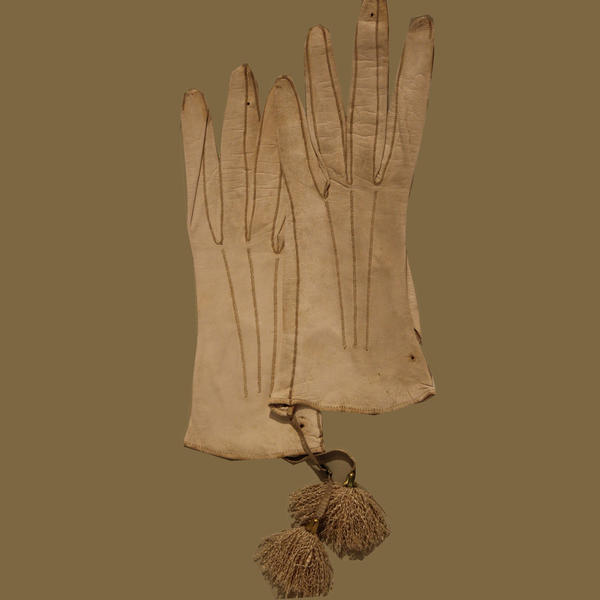Nicolay Chernyshevsky and Olga Vasilyeva met in February 1853. Nicolay decided at once that her personality “was exactly what he needed for joy and happiness”. He was somewhat disconcerted by Olga’s words that she was not in love, but hopefully would learn to love her fiancée with time. Nonetheless, he appreciated her sincerity and straightforwardness, and the young couple got married three months after their acquaintance.
The 20-year-old bride was pretty: black curly hair, large shining eyes, and olive skin. The eldest daughter of a medical doctor from Saratov inherited the southern type of beauty from her Italian grandmother whom her grandfather Kirill Kazachkovsky, lieutenant general, hero of the 1812 Patriotic War brought with him from a foreign campaign. Olga received essentially no education, even though she was a noble-born maiden. However, Nicolay Chernyshevsky was attracted by her liveliness, initiative, and courage. In his eyes she was a beauty and had brains.
By and by, Olga Sokratovna also learned to appreciate high moral virtues of her spouse. Having realized that Nicolay Gavrilovich was far removed from the pressures and troubles of everyday life she took all housekeeping responsibilities upon herself, as well as the upbringing of their sons born later. Most importantly, Olga Sokratovna remained true to her wedding vows for twenty years while the writer was exiled to Siberia. She visited her husband with their younger son at the Kadainsky ore mine and expressed the desire to move in with him in Vilyuisk.
Upon his return from Siberian exile, Olga Chernyshevskaya surrounded her husband with warm attention and care, she was his closest assistant and protected him from unwanted visitors, took great care of his comfort. About a year before his death, Chernyshevsky wrote to his wife: ‘your personality supported my trust in human reason and magnanimity’. She stayed with Nicolay Chernyshevsky to his last hour.
In 1918, at the age of 85, Olga Sokratovna died and was buried in Saratov on the memorial site of the Chernyshevsky family in the Voskresensky cemetery. Even though she did not live to see the museum, Olga Sokratovna did a lot to keep the memory of the revolutionary writer alive. She contributed explanatory notes to the collection of things that belonged to N.G. Chernyshevsky. Her notes were used by the museum to write legends explaining the origin of the exhibits.
The 20-year-old bride was pretty: black curly hair, large shining eyes, and olive skin. The eldest daughter of a medical doctor from Saratov inherited the southern type of beauty from her Italian grandmother whom her grandfather Kirill Kazachkovsky, lieutenant general, hero of the 1812 Patriotic War brought with him from a foreign campaign. Olga received essentially no education, even though she was a noble-born maiden. However, Nicolay Chernyshevsky was attracted by her liveliness, initiative, and courage. In his eyes she was a beauty and had brains.
By and by, Olga Sokratovna also learned to appreciate high moral virtues of her spouse. Having realized that Nicolay Gavrilovich was far removed from the pressures and troubles of everyday life she took all housekeeping responsibilities upon herself, as well as the upbringing of their sons born later. Most importantly, Olga Sokratovna remained true to her wedding vows for twenty years while the writer was exiled to Siberia. She visited her husband with their younger son at the Kadainsky ore mine and expressed the desire to move in with him in Vilyuisk.
Upon his return from Siberian exile, Olga Chernyshevskaya surrounded her husband with warm attention and care, she was his closest assistant and protected him from unwanted visitors, took great care of his comfort. About a year before his death, Chernyshevsky wrote to his wife: ‘your personality supported my trust in human reason and magnanimity’. She stayed with Nicolay Chernyshevsky to his last hour.
In 1918, at the age of 85, Olga Sokratovna died and was buried in Saratov on the memorial site of the Chernyshevsky family in the Voskresensky cemetery. Even though she did not live to see the museum, Olga Sokratovna did a lot to keep the memory of the revolutionary writer alive. She contributed explanatory notes to the collection of things that belonged to N.G. Chernyshevsky. Her notes were used by the museum to write legends explaining the origin of the exhibits.



